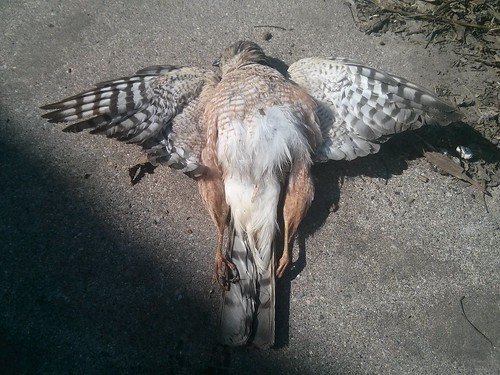You may have read about it in the news, but we’re living right in the middle of it (well, almost) here in Southeastern Minnesota. Several counties about 2 hours NW of us were the early epicenters of this particular H5N2 outbreak in our state’s numerous commercial turkey flocks. We’ve also seen outbreaks to the East in Wisconsin’s commercial broiler flocks and to the South in Iowa’s commercial laying flocks.
What we’ve yet to see is a single outbreak in “backyard” or alternative (read: pasture-based) poultry flocks. This is in spite of the fact that these free-ranging flocks should be MUCH more likely to come into contact with the virus through contact with the outdoors generally, and wild birds more specifically.
Wild birds, especially waterfowl, are the alleged carriers of this particular strain of bird flu. We’re in the midst of the spring migration here in the Mississippi flyway, which means we’re up to our eyeballs in wild birds and waterfowl right now. With all these wild birds acting as disease vectors, the USDA’s guidance is pretty simple: keep your poultry locked up indoors and keep all the germs outdoors.
Try as they might, the commercial poultry farmers seem unable to stop the virus from infiltrating their barns. We’ve already lost 8% of Minnesota’s turkey flock to the outbreak and 17% of Iowa’s laying flock.
So if the virus is getting into highly bio-secure poultry barns, we can safely assume that it’s probably getting into wide-open backyard and pastured poultry flocks like ours.
The big question is, why is the virus killing off confinement poultry and not ours?
I was mulling over all these questions on Saturday morning, when I walked out of my house to find this lying on my patio.
That looks an awful lot like a recently deceased cooper’s hawk. Of the ~2500 wild birds that the MDC has tested for avian influenza so far, the only positive they’ve turned up was a recently deceased cooper’s hawk. They’re asking people to report any dead raptors they find, so that they can be tested for the virus.
Cue panicking about the Minnesota Department of Ag showing up to liquidate our laying flock….
After calling in to report said cooper’s hawk to the MDC, we breathed a big sigh of relief. They didn’t want to take the bird in for testing, it had likely been dead too long. Apparently they have to be pretty fresh to still carry the virus.
Here it is several days later, and our chickens are still healthy.
So far, so good.


EVEN WITH THIS VIRUS…I DONT FIND IT STRANGE AT ALL THAT ITS AFFECTING CONFINED FLOCKS MORE THAN PASTURED. CONFINEMENT BREEEDS MANY DISEASES. OPEN FRESH AIR AND SUN SEEM TO HAVE A STRONG HEALTHY AFFECT…” NATURAL”
Thanks, Andrew. My thoughts exactly.
We had a dead Coot in our barnyard. I had never seen one before and had to look it up, it’s a water fowl.
I haven’t bothered to keep my chickens locked up during the day. There are no commercial flocks nearby, so I don’t feel I’m endangering anyone besides my own flock. All my chickens are fine.
What’s the next shoe to fall? Dairy herds? We’re starting to pack them in tens of thousands in confinement. This can’t be good.
As if the bird flu were not bad enough–consider how they euthanize the birds. Yes, I know they are “just” chickens and turkeys, but they are still God’s creatures, and we are charged with being responsible for them.
My feeling is that disease comes easier to stressed birds. If your chickens are able to run around outside and do other chicken-ey stuff, they’ve definitely got a leg up on the factory birds.
Glad to hear the MDA isn’t going to overreact to your dead hawk. I hope your chooks and the rest of your wild birds (and you humans!) continue to stay healthy through the whole ordeal.